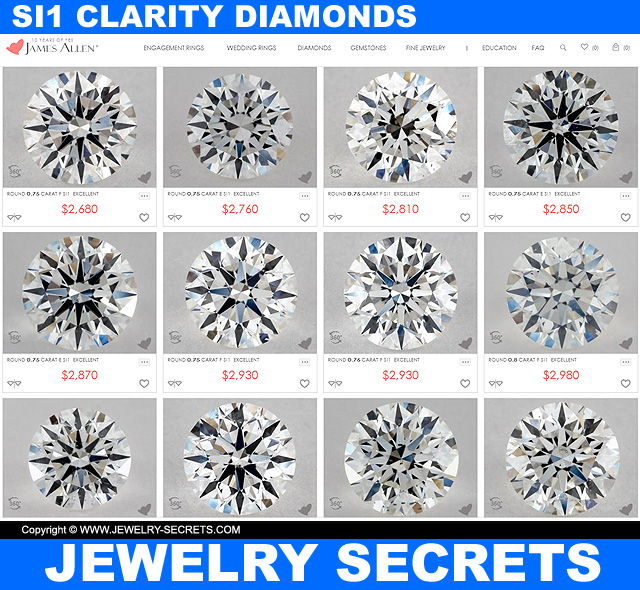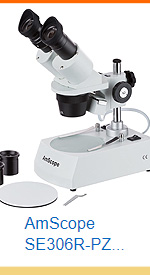WHAT SI CLARITY REALLY MEANS
THE TRUE MEANING OF SI1, SI2 (AND SI3) CLARITY DIAMONDS
This post contains affiliate links. If you use these links to buy something I may earn a commission. Thanks! As an Amazon Associate I also earn from qualifying purchases.

SI WHAT?
Nearly half of the diamonds that you see in jewelry stores today have an SI clarity grade.
But “SI” can be rather confusing if you don’t know what it means.
So first, let’s look at the true definition of SI clarity, and then I’ll tell you what it really means.
SI is an abbreviation for “Slightly Included”.
Slightly Included are grades on a GIA clarity grading chart (a scale for grading inclusions and blemishes in a diamond). SI clarity imperfections are normally invisible to the unaided eye (meaning, without the use of magnification, like a microscope or a jeweler’s loupe).
These small inclusions are visible once magnified (10x magnification is what they use to grade diamonds with), and are often located centrally, and easily noticed once scoped.
Sometimes these small markings (the diamond’s fingerprint), can be seen without magnification (this happens more in fancy cut diamonds – Princess Cut, Oval Cut, Marquise Cut…)
There are two grades of SI clarity diamonds: SI1 and SI2.
See the GIA clarity grading chart below:

That’s the chart that everyone sees, a diagram of diamonds with marks on them to give you an general idea about clarity grades.
But seeing real diamonds, real SI clarity stones, is a much better learning tool. So take a look at these SI1 and SI2 clarity diamonds to see for yourself…
SI1 is the higher range
SI grades are higher up the scale and better than SI2 diamonds. But both stones look very similar to the eye. In fact, most people can’t tell the difference between them side by side (even under magnification).
But the biggest difference between them is this:
- The inclusions in SI2 diamonds are usually bigger, more in abundance, and more obvious under magnification.
- From a side view (through the pavilion), you can often see the flaws in an SI2 stone (you can’t see them in an SI1).
SI1 diamonds are the best seller of the bunch, and are also the most popular clarity on earth because they face up eye-clean, and look just like a more expensive clarity.
SI1 diamonds are in all the stores as well (versus higher clarity diamonds are harder to find).
Plus, with SI1 clarity diamonds, you won’t see any black carbon spots (that look like pepper), lines, cracks, cloudy areas, or fractures in the diamond (without magnification).
But here’s what it really means…
An SI1 diamond will look just like a flawless diamond with the bare eye. Meaning, you’ll get the same look, but save thousands on that stone.
Compare the two diamonds and prices below:
(IF means Internally Flawless)
See, big eye-opener!
SI1 diamonds have small inclusions (and as a side note, this could be 1 inclusion, or it could be 50… It’s not “how many” there are, but what they look like, where they fall inside the stone, and how they affect the overall appearance and beauty of the diamond). These small inclusions are a good thing because they make identifying a diamond a breeze.
Since flaws themselves never change, alter, grown, shrink, or move, they’ll look like that forever. After all, they’ve looked like that for over a billion years already. So at anytime, anywhere, you’ll be able to pick up a loupe, and view those same flaws and know that that is your stone and no one (or no jeweler) has swapped it out or switched it.
That’s peace of mind
Now, one more word about SI…
On the market you may come across one other SI clarity range:
SI3 clarity diamonds
IGNORE THEM!
SI3 is not a GIA grading range (see the grading chart above again). GIA (Gemological Institute of America) does not recognize SI3 as a grade.
SI3 is created and used by one grading company only: IGI (International Gemological Institute).
This extra grade helps sell their lower quality stones better. Because SI sounds good, and I clarity does not.
These so-called SI3 diamonds are nothing more than glorified I clarity diamonds (I1)… Send them to GIA and see for yourself!
So don’t buy SI3!
You’d be better off buying a GIA I1 clarity diamond instead (plus, it’d be cheaper).
There you go…
That’s the real scoop and meaning of SI clarity diamonds. And if you’re shopping for an SI stone (looking for the best price possible), then check out James Allen here:
James Allen has prices that are unbeatable (Compare them with any mall store and you’ll see). They also have incredible warranties and you can see the actual stone (not a sample photo), close-up, magnified, BEFORE you buy it!
Now that’s something you’ll truly want to view!
Check out all the high quality SI1 clarity diamonds here.
Do note that I’ve also included other things in that diamond search: a high color (colorless – pure white range – D, E and F diamonds), an Ideal Cut, GIA Certified, and NO Fluorescence!
These diamonds will knock your socks off!
Cheers! :)





















What is SIE?
I have a 14K Yellow Gold Ladies Diamond Cluster Ring. Contains ( 16 ) Round Brilliant Cut Natural Diamonds with a total weight of 1.00CT. All Diamonds Consist of SI Clarity H- color & are set in a 14K Yellow Gold Mounting Weighing 3.6 grams. How much can I get for this.